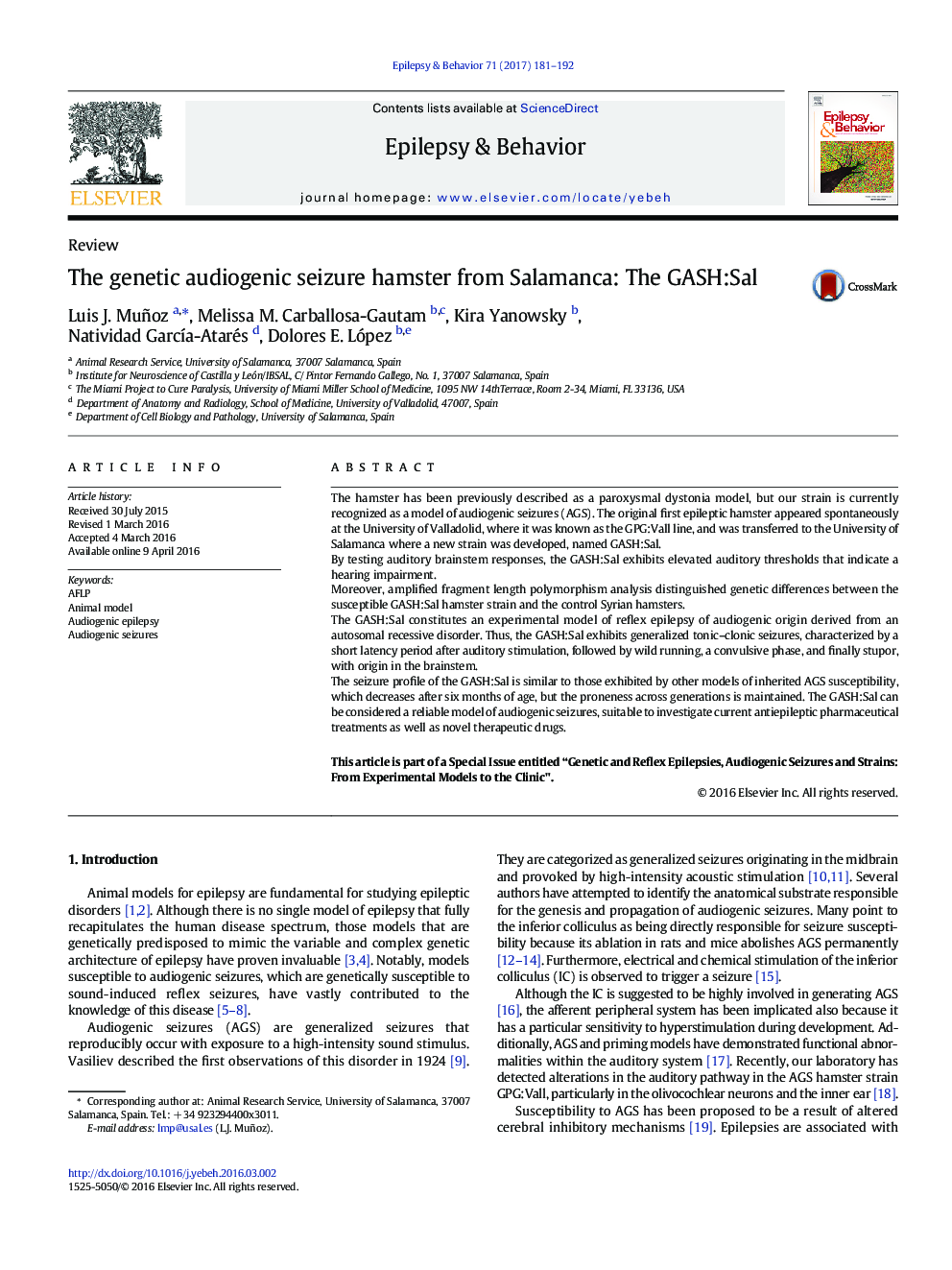| Article ID | Journal | Published Year | Pages | File Type |
|---|---|---|---|---|
| 5628438 | Epilepsy & Behavior | 2017 | 12 Pages |
â¢We describe a new strain with genetic audiogenic epilepsy, the GASH:Sal.â¢The audiogenic susceptibility has an autosomal recessive inheritance pattern.â¢Acute and chronic behavioral characterization of audiogenic seizures was made.â¢The elevated auditory thresholds of the strain indicate a hearing impairment.â¢Significant genomic differences between GASH:Sal and control hamsters were found.
The hamster has been previously described as a paroxysmal dystonia model, but our strain is currently recognized as a model of audiogenic seizures (AGS). The original first epileptic hamster appeared spontaneously at the University of Valladolid, where it was known as the GPG:Vall line, and was transferred to the University of Salamanca where a new strain was developed, named GASH:Sal.By testing auditory brainstem responses, the GASH:Sal exhibits elevated auditory thresholds that indicate a hearing impairment.Moreover, amplified fragment length polymorphism analysis distinguished genetic differences between the susceptible GASH:Sal hamster strain and the control Syrian hamsters.The GASH:Sal constitutes an experimental model of reflex epilepsy of audiogenic origin derived from an autosomal recessive disorder. Thus, the GASH:Sal exhibits generalized tonic-clonic seizures, characterized by a short latency period after auditory stimulation, followed by wild running, a convulsive phase, and finally stupor, with origin in the brainstem.The seizure profile of the GASH:Sal is similar to those exhibited by other models of inherited AGS susceptibility, which decreases after six months of age, but the proneness across generations is maintained. The GASH:Sal can be considered a reliable model of audiogenic seizures, suitable to investigate current antiepileptic pharmaceutical treatments as well as novel therapeutic drugs.This article is part of a Special Issue entitled “Genetic and Reflex Epilepsies, Audiogenic Seizures and Strains: From Experimental Models to the Clinic".
